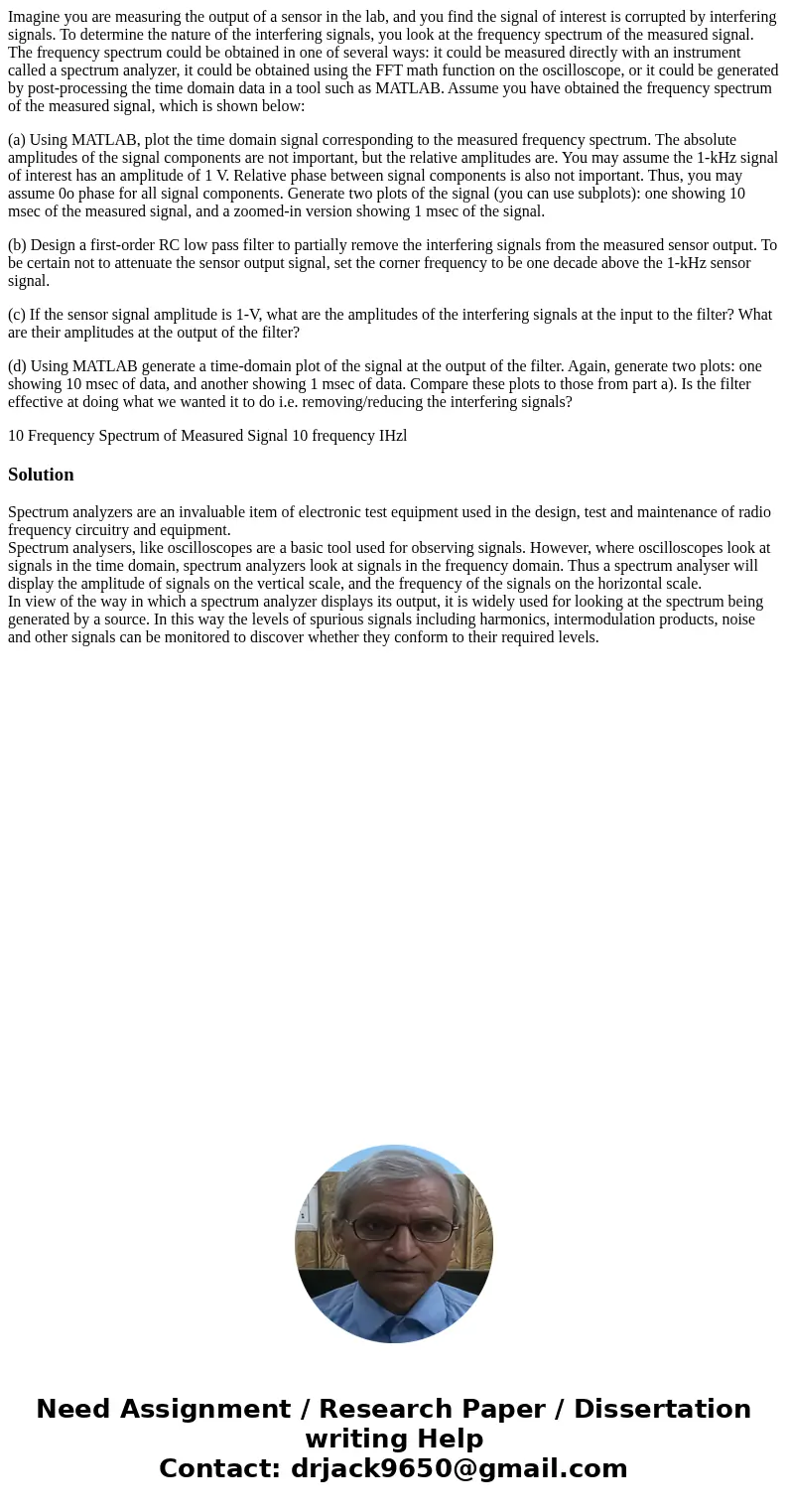Imagine you are measuring the output of a sensor in the lab
Imagine you are measuring the output of a sensor in the lab, and you find the signal of interest is corrupted by interfering signals. To determine the nature of the interfering signals, you look at the frequency spectrum of the measured signal. The frequency spectrum could be obtained in one of several ways: it could be measured directly with an instrument called a spectrum analyzer, it could be obtained using the FFT math function on the oscilloscope, or it could be generated by post-processing the time domain data in a tool such as MATLAB. Assume you have obtained the frequency spectrum of the measured signal, which is shown below:
(a) Using MATLAB, plot the time domain signal corresponding to the measured frequency spectrum. The absolute amplitudes of the signal components are not important, but the relative amplitudes are. You may assume the 1-kHz signal of interest has an amplitude of 1 V. Relative phase between signal components is also not important. Thus, you may assume 0o phase for all signal components. Generate two plots of the signal (you can use subplots): one showing 10 msec of the measured signal, and a zoomed-in version showing 1 msec of the signal.
(b) Design a first-order RC low pass filter to partially remove the interfering signals from the measured sensor output. To be certain not to attenuate the sensor output signal, set the corner frequency to be one decade above the 1-kHz sensor signal.
(c) If the sensor signal amplitude is 1-V, what are the amplitudes of the interfering signals at the input to the filter? What are their amplitudes at the output of the filter?
(d) Using MATLAB generate a time-domain plot of the signal at the output of the filter. Again, generate two plots: one showing 10 msec of data, and another showing 1 msec of data. Compare these plots to those from part a). Is the filter effective at doing what we wanted it to do i.e. removing/reducing the interfering signals?
10 Frequency Spectrum of Measured Signal 10 frequency IHzlSolution
Spectrum analyzers are an invaluable item of electronic test equipment used in the design, test and maintenance of radio frequency circuitry and equipment.
Spectrum analysers, like oscilloscopes are a basic tool used for observing signals. However, where oscilloscopes look at signals in the time domain, spectrum analyzers look at signals in the frequency domain. Thus a spectrum analyser will display the amplitude of signals on the vertical scale, and the frequency of the signals on the horizontal scale.
In view of the way in which a spectrum analyzer displays its output, it is widely used for looking at the spectrum being generated by a source. In this way the levels of spurious signals including harmonics, intermodulation products, noise and other signals can be monitored to discover whether they conform to their required levels.

 Homework Sourse
Homework Sourse